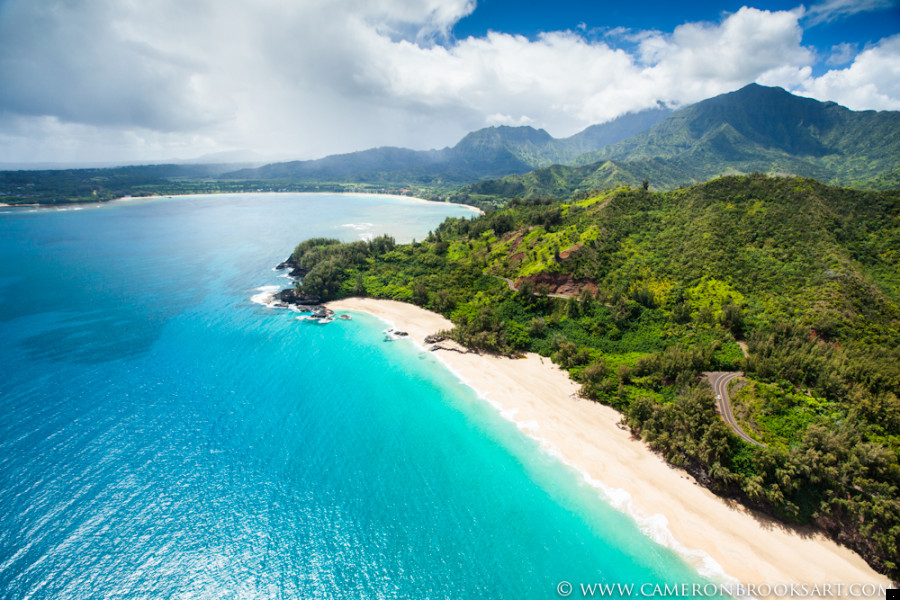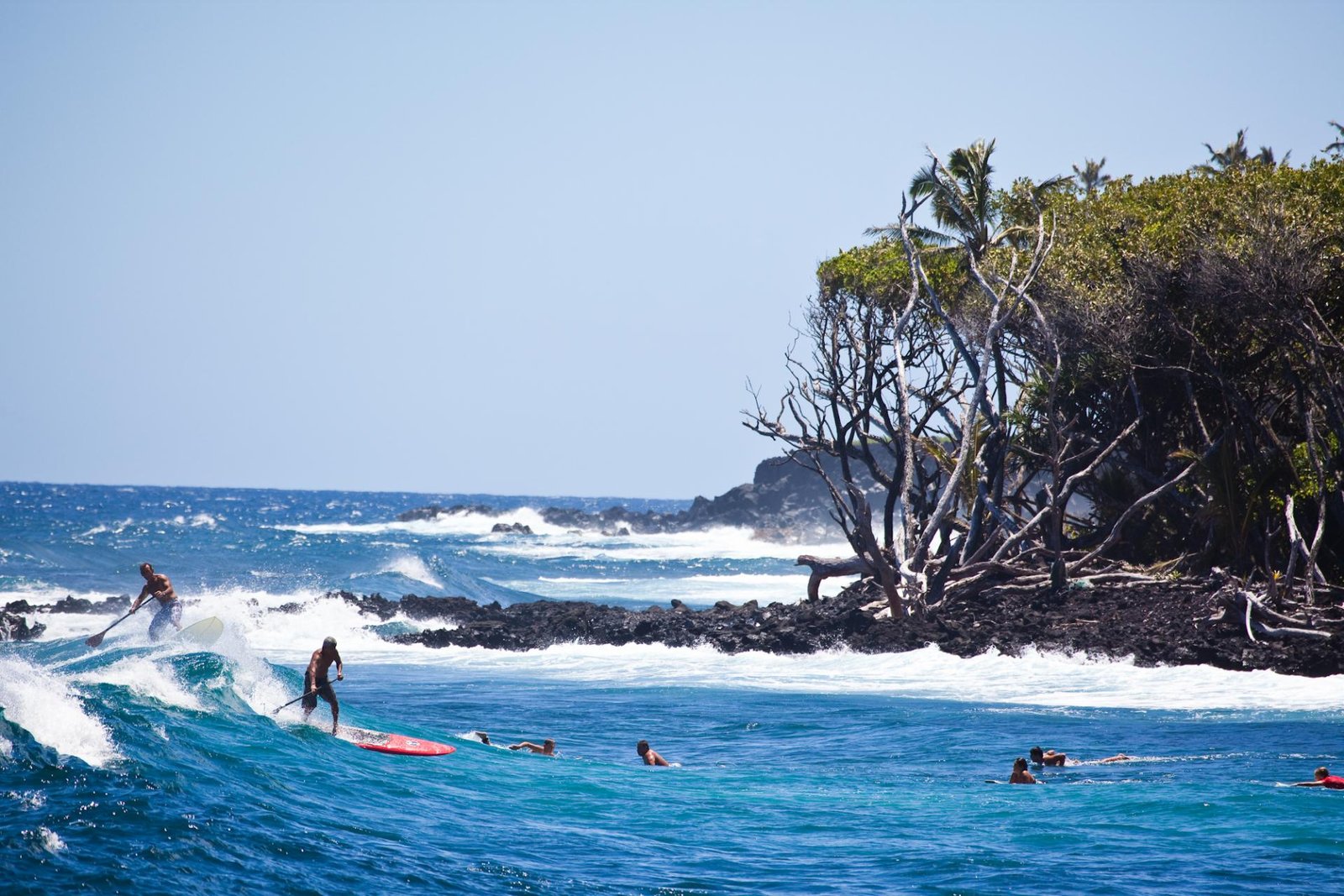Understanding the largest islands in Hawaii and their top tourism destinations can enhance your travel plans and deepen your appreciation for this diverse region. Hawaii, known for its stunning landscapes and rich cultural heritage, is an archipelago composed of numerous islands, each offering unique experiences.
On these tropical islands, some of the most diversified climates, topographies, and environments are found in the United States. With its amazing beaches, delicious waterfalls, and sweeping canyons that mimic a picture, Hawaii is among the most beautiful locations on Earth. Although most people could know some of the most well-known Hawaiian Islands, there are a few more that are quite worth seeing.
Read Also:27 Best Things to Do in Honolulu
The 8 Largest Islands in Hawaii | A Guide to Their Unique Features
Here are the largest islands in Hawaii, each with its own distinct charm and attractions.
1. Hawaii “The Big Island”

Hawaii, commonly referred to as the “Big Island”, is the largest island in Hawaii, as well as in the United States covering over 4,028 square miles. Just 13% of Hawaii’s population calls it home, despite its great size. Among Hawaii’s most iconic locations is the Volcanoes National Park home to Kilauea, one of the world’s most active volcanoes. The park offers various hiking trails, many beaches, and the chance to learn about volcanic activity and its impact on the island.
Mauna Kea standing at 13,796 feet above sea level, Mauna Kea is the highest mountain in mountain when measured from the its base on the ocean floor (33,497 feet). It’s renowned for its astronomical observatories, which take advantage of the clear, dark skies. The town of Hilo, located on the eastern side of the island, known for its lush scenery and vibrant local culture. Visitors can explore the stunning Liliuokalani Gardens, visit the Pacific Tsunami Museum, and enjoy the numerous waterfalls in the area, such as Rainbow Falls and Akaka Falls.
The Big Island is unique for its ongoing volcanic activity. Kilauea has been erupting almost continuously since 1983, reshaping the island’s landscape and providing a live demonstration of Earth’s geological processes. Additionally, the island’s climate diversity means you can experience a wide range of weather conditions in a single day.
2. Maui-“Valley Isle”
Maui, the second-largest island in Hawaii, covers about 727 square miles. Known as the “Valley Isle” because of its large isthmus between two volcanoes, it is a popular tourist destination. Maui is famous for its beautiful beaches, making it a favorite spot for beachgoers and water sports enthusiasts. Popular beaches include Kaanapali Beach, known for its golden sands and luxury resorts, and Wailea Beach, famous for its calm waters and stunning sunsets.
Key attractions in Maui include Haleakalā National Park, centered around the dormant Haleakalā volcano, and the scenic Road to Hana with its winding roads, coastal views, and waterfalls. Notable stops on the Road to Hana are the Garden of Eden Arboretum, Waianapanapa State Park with its black sand beach, and the tranquil Pools of Ohe’o. Lahaina, a historic town and former capital of the Hawaiian Kingdom, offers art galleries, boutiques, and restaurants on Front Street and is a great spot for whale watching in the winter.
Comprising around 150,000 people, Maui is an island with a diverse economy based on business, agriculture, and tourism. Though papaya, coffee, almonds, and flowers all help greatly boost the island’s export economy, sugar and pineapple remain the most often traded goods.
Read Also: 18 Best Things to Do in Kauai, Hawaii
3. Oahu- “The Gathering Place”
Oahu, the third-largest island in the Hawaiian archipelago, spans about 597 square miles and is home to the state capital, Honolulu. Known as “The Gathering Place,” Oahu is the most populous island in Hawaii, with over one million residents. This island is a cultural and economic hub, featuring a bustling cityscape, historical landmarks, and beautiful natural attractions.
Oahu is home to several iconic locations. Honolulu, the capital city, is a lively metropolis with cultural, historical, and recreational activities. Waikiki Beach, famous for its gentle waves and vibrant atmosphere, is ideal for surfing, sunbathing, and people-watching, with many high-end hotels, restaurants, and shops nearby.
Pearl Harbor is a significant historical site, featuring the USS Arizona Memorial, Battleship Missouri Memorial, and Pearl Harbor Aviation Museum, where visitors can learn about the events of December 7, 1941. The North Shore is renowned for its legendary surf breaks, especially in winter when waves can reach 30 feet. Popular beaches here include Waimea Bay, Banzai Pipeline, and Sunset Beach, offering a more relaxed vibe compared to bustling Honolulu.
4. Kauai-“Garden Isle”

Kauai, the fourth-largest island in Hawaii, covers about 562 square miles. Known as the “Garden Isle,” it features rainforests, mountains, valleys, and beaches. As the oldest Hawaiian island, it boasts rich, fertile landscapes and diverse natural formations, making it ideal for outdoor enthusiasts and those seeking tranquility.
Key attractions include Waimea Canyon, known as the “Grand Canyon of the Pacific,” a stunning geological wonder. It spans about 10 miles in length, 1 mile wide, and plunges over 3,500 feet deep. The Napali Coast features towering sea cliffs, lush valleys, and secluded beaches. You can reach it by boat, helicopter, or challenging hiking trails.
Hanalei Bay, on the north shore, is a stunning bay. It has a long curved beach perfect for swimming, surfing, and paddleboarding. The town of Hanalei is relaxed and inviting, with shops, restaurants, and art galleries. The Wailua River is the only navigable river in Hawaii and is perfect for kayaking and boat tours and others. Though small, 97% of the island is still undeveloped. Just over 70,000 Kauai residents dwell in the towns of Princeville, Hanalei, Lihue, and Kapa’a
5. Molokai-“Friendly Isle”
Molokai is the fifth-largest island in Hawaii, covering about 260 square miles. It’s called the “Friendly Isle” and shows traditional Hawaiian life with untouched scenery, cultural history, and a friendly community. The island’s small population and few big resorts make it perfect for travelers who want to avoid crowds and experience genuine Hawaiian culture.
Key Attractions includes Kalaupapa National Historical Park a significant site that tells the story of the leprosy settlement established in the 19th century. Access to Kalaupapa is limited, requiring either a mule ride, a hike, or a small plane flight, but the journey offers stunning views of the island’s rugged coastline.
Papohaku Beach, one of Hawaii’s largest white sand beaches, stretches over three miles long and offers pristine, uncrowded shores. It’s an excellent spot for beachcombing, picnicking, and enjoying the sunset. The gentle waves make it suitable for swimming and other water activities.
Halawa Valley is one of Hawaii’s oldest inhabited areas, filled with cultural history and natural beauty. Guided tours offer insights into ancient Hawaiian traditions and let visitors see historical sites like taro terraces and temples.
Read Also: 15 Best Things to Do on the Big Island, Hawaii
6. Lanai-“The Pineapple Isle”
Lanai is the sixth-largest island in Hawaii, covering approximately 140 square miles. Once known for its large pineapple plantations, it is now famous for its quiet beaches, luxury resorts, and outdoor activities. Lanai’s small size and relatively low population make it a quiet, intimate destination.
Key Attractions includes, Hulopoe Bay on Lanai’s south coast is famous for its clear waters and colorful coral reefs, making it perfect for snorkeling, swimming, and exploring tide pools. It’s conveniently located next to the upscale Four Seasons Resort Lanai. Shipwreck Beach is on Lanai’s northeast coast, known for its sweeping views and the remains of a World War II-era shipwreck.
The Garden of the Gods is a unique, otherworldly landscape located on the northern part of the island. The area is filled with red and orange rock formations shaped by centuries of erosion. The Munro Trail is a 12.8-mile trail that offers some of the best views on the island.
7. Niihau-“Forbidden Isle”
Niihau, the seventh-largest island in the Hawaiian archipelago, spans approximately 69 square miles. Known as the “Forbidden Isle,” Niihau is unique due to its private ownership and restricted access, preserving a way of life that remains largely unchanged over the years. Niihau is the least populated of the main Hawaiian Islands, with around 170 residents. It is privately owned by the Robinson family purchased by Elizabeth Sinclair in 1864 and passed on to them. Access to Niihau is generally restricted, making it one of the most isolated and least visited islands.
Niihau is renowned for its strong adherence to traditional Hawaiian culture. Their commitment to tradition offers a rare glimpse into the lifestyle of ancient Hawaii. Due to its restricted access, Niihau boasts an incredibly pristine natural environment. The surrounding waters are teeming with marine life, making it an ideal spot for snorkeling and diving.
Niihau is famous for its unique shell leis, which are handcrafted from tiny, colorful shells found on the island’s beaches. These leis are highly valued for their beauty and craftsmanship, often considered some of the finest shell leis in the world.
8. Kaho’olawe-“Target Isle”

Kaho’olawe, the smallest of the eight largest island in Hawaii, spans approximately 45 square miles. Known as the “Target Isle.” Despite its challenging environment, Kaho’olawe holds a deep spiritual and historical significance for Native Hawaiians. Kaho’olawe is considered sacred by Native Hawaiians. It was used for navigation training and religious purposes. Various archaeological sites, including heiau (temples) and fishing shrines.
Kaho’olawe was used as a bombing range and military training ground by the U.S. Navy from World War II until 1990. Since being returned to the state of Hawaii in 1994, Kaho’olawe has been the focus of extensive restoration efforts. The Kaho’olawe Island Reserve Commission (KIRC) oversees projects aimed at eradicating invasive species, planting native vegetation, and restoring the island’s ecological balance.
Access to Kaho’olawe is highly restricted to protect both the island’s fragile environment and its cultural sites. Visits are typically limited to those involved in restoration and cultural activities. The KIRC organizes volunteer opportunities for individuals interested in contributing to the island’s restoration efforts.
Read Also: 20 Best Things to do in Maui, Hawaii
Hawaii’s largest islands each offer unique landscapes, attractions, and cultural experiences. From the volcanic wonders of the Big Island to the lush gardens of Kauai and the historical sites of Oahu, there’s something for every traveler. Exploring these islands provides a deeper appreciation of Hawaii’s natural beauty and rich history.



